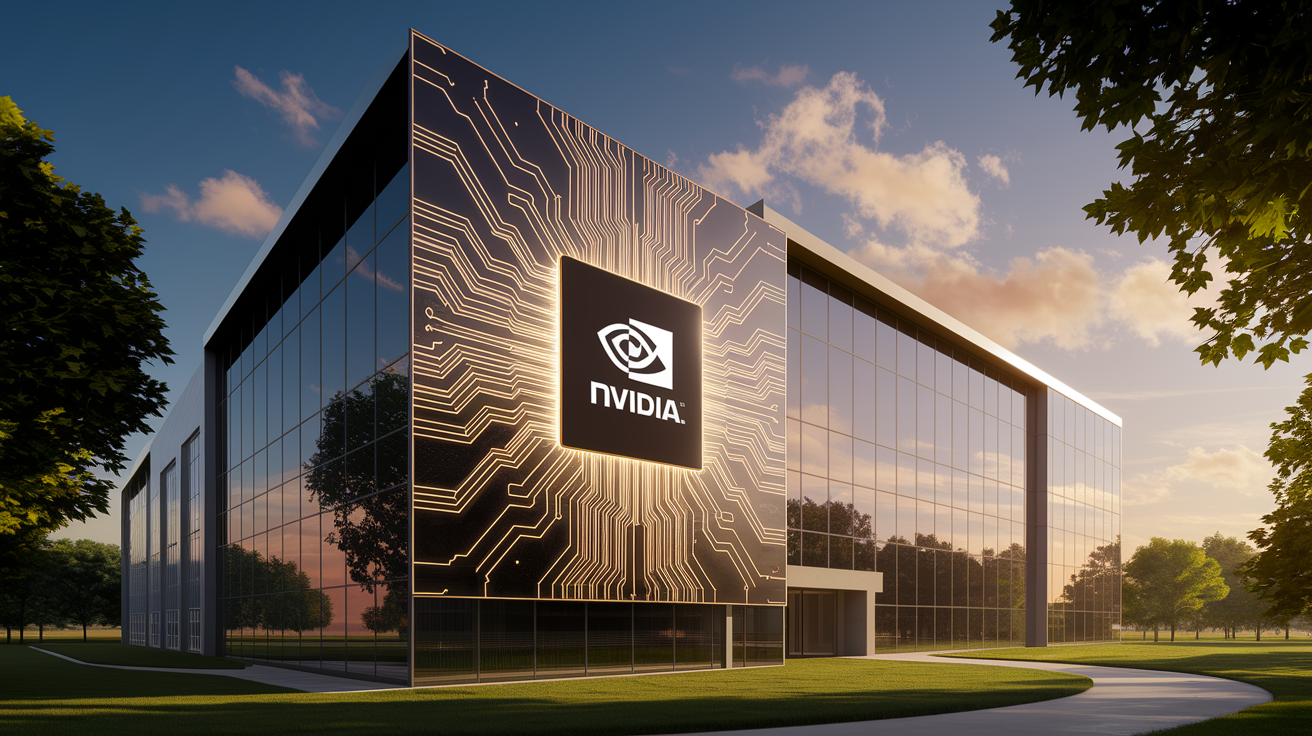In the rapidly evolving landscape of artificial intelligence, Nvidia and AMD are engaged in a fierce battle for dominance in the AI chip market. These two tech giants are not only competing for market share, but also driving innovation and shaping the future of AI technology. This article delves into the revenue growth strategies of both companies, highlighting their unique approaches and potential impact on investors. From Nvidia’s early leadership to AMD’s strategic maneuvers, each chapter explores the complexities of their rivalry and offers insights for investors moving in this dynamic sector.
Nvidia’s Innovative Edge: Dominance in the AI Chip Arena

Nvidia’s dominance in the AI chip market is undeniably intertwined with its relentless pursuit of innovation and strategic positioning in the market. At the core of this success are innovative products that consistently push technological boundaries and redefine capabilities in AI.
One of Nvidia’s latest advancements is the Blackwell Ultra, a chip set to revolutionize AI services by delivering performance that triples that of its predecessor. Designed to enhance the offerings of cloud service providers, it provides an unprecedented increase in tokens per second, potentially boosting revenues by up to fifty times. This leap in performance underscores Nvidia’s ambition and capability to meet the growing demands for premium, time-sensitive AI services.
Another formidable development from Nvidia is the Vera Rubin system, an AI supercomputer unveiled at the GTC conference, slated for launch in 2026. With the power to handle 50 petaflops during inference, it more than doubles the computational capacity of existing solutions, marking a quantum leap in performance. This system promises to efficiently tackle complex AI operations, further consolidating Nvidia’s leadership in AI hardware.
Looking ahead, Nvidia’s roadmap highlights innovations like the Feynman chips, expected in 2028. Such foresight in technological development reinforces Nvidia’s commitment to maintaining a technological edge, crucial in a rapidly evolving AI landscape.
Beyond product innovation, Nvidia stands out for its rapid annual innovation cycle, which sharply differentiates it from competitors that tend to follow a biennial model. This agile approach not only helps to outpace rivals but also raises customer switching costs, effectively creating a barrier to new entrants.
Crucially, Nvidia rounds out its hardware advancements with a robust software ecosystem. Tools like CUDA, cuDNN, and TensorRT sync seamlessly to optimize AI workloads. Together with platforms like the NVIDIA AI Enterprise suite and Omniverse, these tools consolidate Nvidia’s competitive advantage by providing comprehensive solutions for AI development and deployment.
However, this dominance is not without challenges. Emerging competitors like DeepSeek, offering AI models at competitive prices, pose a threat to Nvidia’s pricing strategy and market share. Additionally, economic factors, including tariffs and regulatory pressures, have impacted Nvidia’s stock performance.
Nvidia’s strategy to diversify beyond chips into software aims to mitigate such risks. This move also aligns with projections for increased investments in AI infrastructure by 2032, paving the way for Nvidia’s products to meet the growing demands for processing power. Their focus on developing AI agents, embodying reasoning and autonomous problem-solving, further reflects Nvidia’s vision of AI integrated across sectors.
In summary, Nvidia’s prominence in the AI chip market is the result of its strategic product innovations, a powerful software ecosystem, and an unwavering commitment to rapid innovation cycles, firmly positioning it at the forefront of AI technology.
AMD’s Strategic Evolution in the Battle for AI Supremacy

AMD is dynamically charting its own course in the competitive AI technology sector, advancing with strategic product innovations and partnerships, thus positioning itself as a formidable contender against industry giants like Nvidia.
AMD’s focus on product developments is evident in its EPYC processors, renowned for their excellent performance in enterprise AI applications. These processors, built on x86 architecture, not only boast superior energy efficiency but also provide seamless compatibility, ideally meeting the needs of modern data centers. They offer a performance and efficiency advantage over competitors, allowing enterprise environments to effectively optimize AI workloads. This strategic positioning in enterprise solutions places AMD on solid ground in one of the fastest-growing market segments.
On the consumer front, the Ryzen AI MAX+ 395 is drawing attention with its AI-enhanced capabilities. By integrating Zen 5 CPU cores and an advanced NPU, AMD is targeting the growing market of AI-optimized consumer laptops. This provides AMD with a compelling offering for lightweight and premium devices, challenging similar products from competitors in both performance and application capabilities.
Tech incursions are not stopping on the ground, as AMD’s Versal AI Edge is now space-ready, a niche but powerful market sector. This adaptive SoC, with Class B space flight qualification, redefines performance metrics for AI applications in extraterrestrial environments. Its innovative and compact design reduces power consumption while maintaining high computational efficiency, exemplifying AMD’s commitment to technological advancement.
A key objective for AMD is its MI350 Accelerator, aimed at dethroning Nvidia’s established market dominance in data center AI accelerators. While facing competition from Nvidia’s software ecosystem, AMD is making strategic investments to build a competitive platform. By enhancing its ROCm software environment, AMD aims to attract major industry players like Microsoft and Oracle to its MI350 accelerator, highlighting a concerted effort to expand its presence in large-scale deployments.
Strategically, AMD’s partnerships and market strategies are crucial. The company is cultivating a robust software ecosystem to challenge Nvidia’s CUDA while promoting partnerships for relevant future shifts. These collaborations, coupled with a projected double-digit revenue growth driven by an expanded market share in the server and AI GPU sectors, underscore AMD’s calculated maneuvers to secure a strong market position.
As the landscape of AI technology evolves, AMD’s advancements—spanning enterprise applications, consumer markets, and even space—represent significant steps in its aggressive race to challenge Nvidia’s supremacy and seize the vast opportunities presented by the AI market.